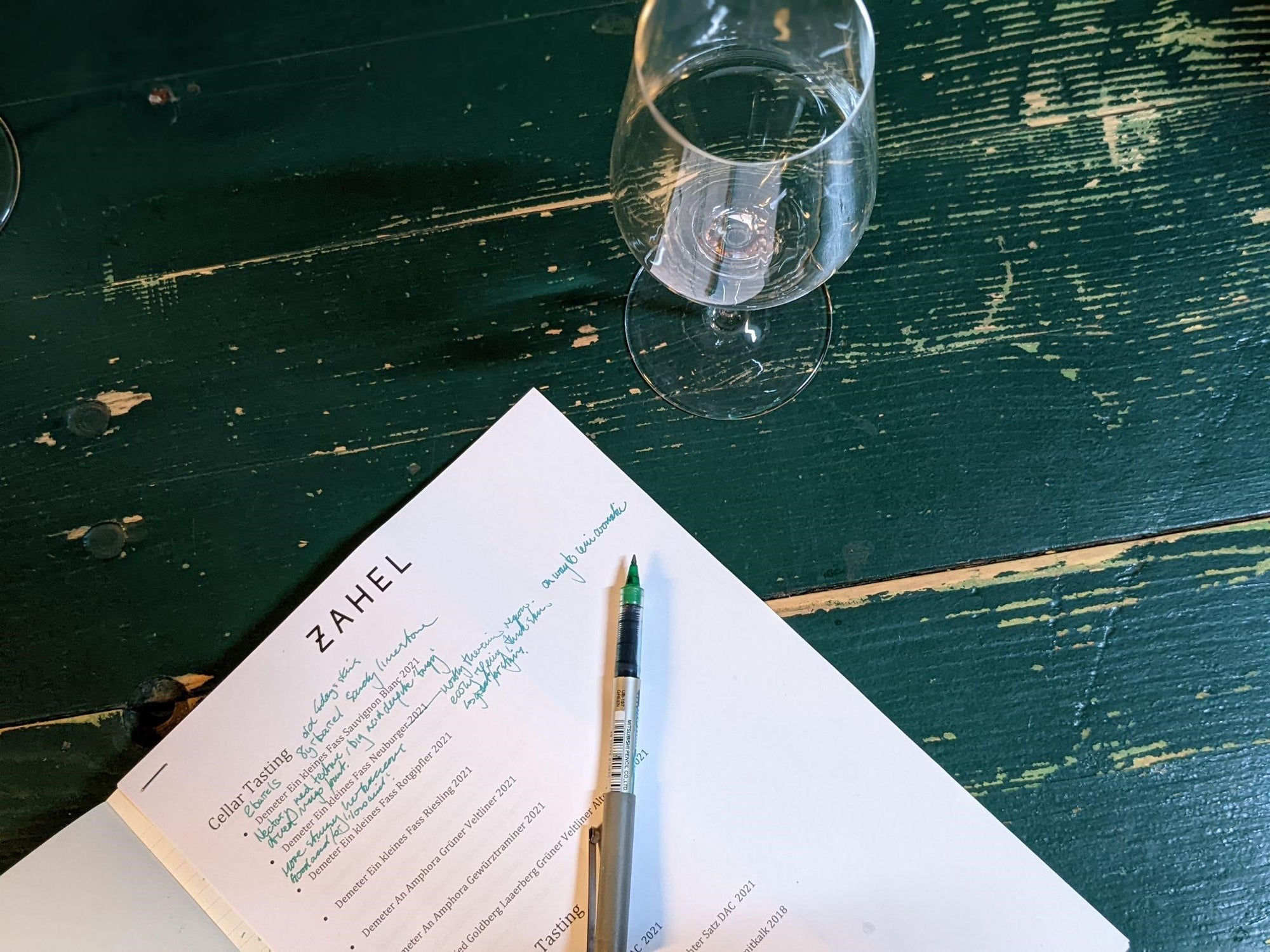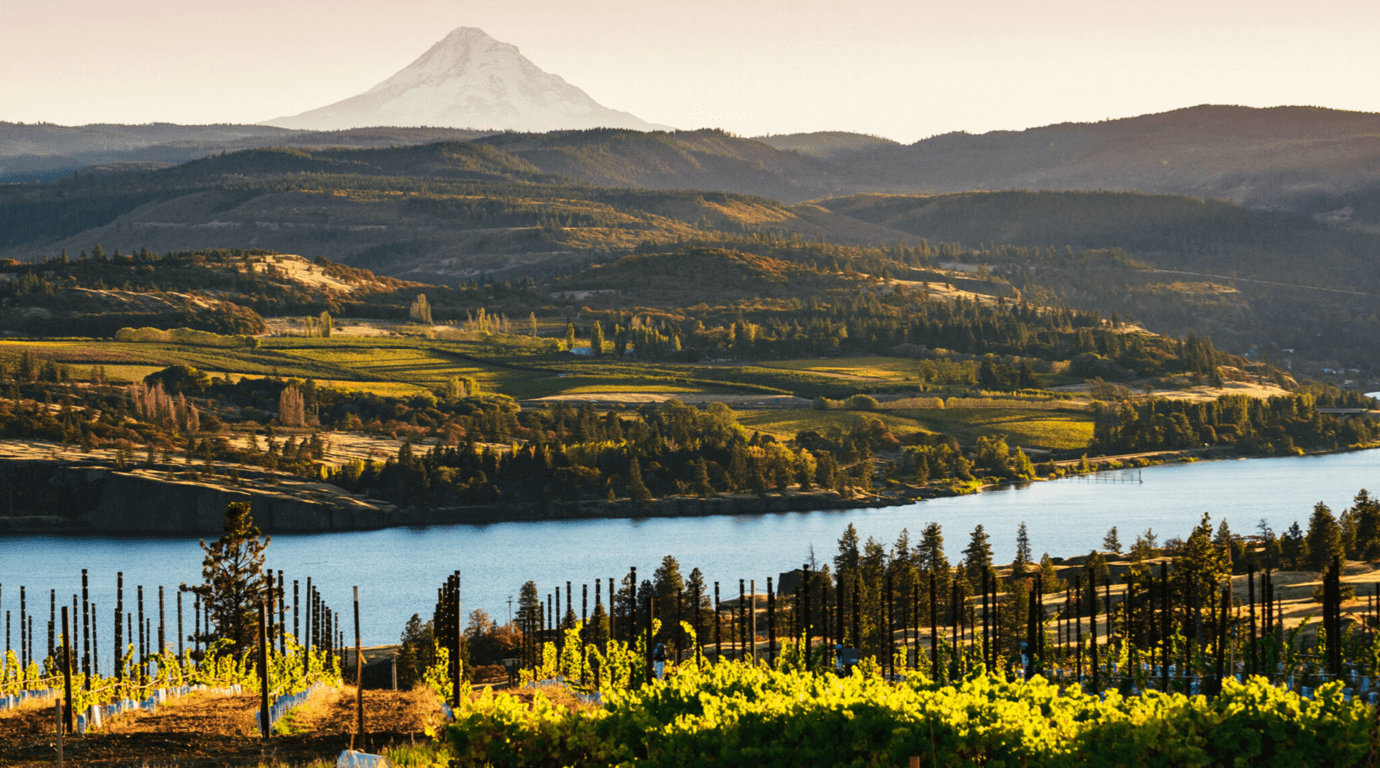What does Austrian wine conjure up to you? Cold weather, tall bottles and grapes you can’t pronounce? (Rotgipfler I’m looking at you) At this point it seems like a cliché to even mention the antifreeze debacle of the 80’s… so let’s not. Things are much, much better now, and with palates around the world craving freshness and drinkability, Austria is a hot topic on the industry’s lips. Which is why, when one of our suppliers invited me to go and visit two of their most exciting producers, I absolutely jumped at the chance.
After an easy 2-hour flight, we arrive in Vienna airport, pick up our hire cars and are excited to get onto our first stop at Weingut Zahel to meet Alex, winemaker, proprietor, and bottle rocket of concentrated energy.
Vienna hosts the largest number of wineries within city limits in the world. An ever growing ~630 producers and 700ha under vine contribute to a wonderfully diverse and exciting wine scene; it’s no wonder that in Austria, they call it Wein not Vienna. Wine is entrenched in Viennese culture, with the Heurige (wine taverns pouring local wines and regional food) being the centre. Weingut & Heuriger Zahel is no exception, so when we arrive in the Mauer neighbourhood to the south west of Vienna and the gates open, we can already sense that first taste of Grüner.

A modern, compact green tractor sits proud in the front, worryingly carrying a big tank on the back for spraying. Our concerns are eased when we read the “Don’t panic, it’s biodynamic” on the side! Alex describes their winemaking as “working closely with nature, using methods that leave our vineyards as untouched as possible” which is why they are farming with strict certified biodynamic Demeter guidelines. This “natural” leaning philosophy is confirmed as we’re led through a spotlessly clean pressing room into the vinification cellar where a mixture of traditional Austrian Stockinger barrels, French oak, and Italian amphorae ferment and age the wines made from Alex’s 93 (!) different parcels within Vienna.
Tradition and technology sit side by side as vessels of ancient design are monitored by LED screens for electronic temperature regulation. Zahel make a changing range of 6 regional cuvées under their classic label, which accounts for roughly 85% of production. The rest are tiny production, single vineyard, often one-off bottlings under the beautiful butterfly labels. Usually just one or two barrels or amphorae per wine resulting in sometimes just 300 bottles. While the main range are some of the best examples of Viennese wines I’ve ever tried – Gemischter Satz, Orangetraube & Blaufränkisch among others – it’s these tiny parcels that get the wine nerd in me excited, and no doubt the same for Alex himself, as he made 43 different cuvées last year!

We start the cellar tasting guided by Alex and his right-hand man Lars. They grab a beat-up table from the back room, along with a wine thief and start to draw samples of his 2021 wines straight from the barrel (surely the coolest experience that can be had for an oenophile), pouring them into a couple of glasses and then sloshing fresh wine into each of ours. Most have just about finished their fermentations and chill out time in their vessels and Alex is happy with how they’re tasting, so has just added a touch of sulphur to take the final snapshot until the bottles arrive (manufacturing delays are still a big problem).
All of the wines we try here, bar a couple, are aged in 600L old oak barrels that had little to no toasting. The idea being that the wood lets the wine breathe and gently stretch its limbs without imparting any new oak flavours to mask the quality of fruit. Skin contact is used pretty much universally on his butterfly label whites, usually short periods of maceration around 18-72hrs to provide texture as well as its natural preservation properties (allowing for less sulphur).

Despite using skin contact, Alex would never call them “orange wines”, and I’d wholeheartedly agree. Lovely aromatics and a weight in the mouth are created, but none of the – all too common – off flavours or clunky tannins that you can find in wines of inferior craftsmanship that chase the “natty wine” trend. The wines are remarkably clean, sleek and precise across the board. The house style reveals itself as power and weight without any awkwardness; depth, opulence and weightlessness all at once. The varietal style and differing terroir come through in each cuvée, yet Alex Zahel’s touch is the thread running through all the wines we taste.
He states he doesn’t want to just make a few wines year on year, or even make specific barrels for certain markets. With his small batch wines being 300 bottles or so, he wants them shared across the world. This is lovely, but the selfish side of me is upset that means the UK (let alone The Good Wine Shop) has to share just a handful of cases of these wonderful wines, with Zahel’s main exports being to the UK, Japan and Scandinavia.

We walk through the tunnel-like winery and get to the ageing room where oak barrels are towered on top of each other ready for a gentle rest. The topic of biodynamic farming, its efficacy and provability comes up; and why Alex practices it too. Preparations such as BD501 (burying quartz in a cow horn on a descending moon, digging it up a year later and dynamizing it with water to be used as a spray in the vineyard) are used in biodynamics, where the lunar calendar and cosmic energies play a large part. He says it’s a big topic to get into, but after two minutes on the subject his passion comes through. While he says he or science can’t necessarily explain it, his vineyards are healthier and wines are better for it. At the crux of it, biodynamics is treating your vineyard very very organically, limiting chemicals, promoting soil health, and physically being in the vines a lot. As the old saying goes “the best compost is the gardener’s shadow”.
The “energy” argument he says he also can’t explain, but relates to the inexplicable energies you find in life: the spark you have when you meet someone new and just click, that one table in the restaurant that just feels right, where no matter the customers, they’re having the best time in the room and are just a little more drunk than everyone else. I can’t help but smile, and the sceptic in me is won over – I get it, and think the energy he speaks of is produced over the winery, and from Alex himself.

We then ascend to the tasting room where a long table is set with Zalto glasses and the ever-trusty bread basket – useful in situations where you’re with a winemaker with as many cuvées as Alex! This is where the real work happens.
We taste through his classic labels starting with the Gemischter Satz; an Austrian speciality translating precisely as “mixed set”, meaning a field blend. Historically varying grapes are interplanted in the same vineyard, where they’re harvested at the same time and then co-fermented together. Nowadays the Gemischter Satz can be from different parcels, and include international grapes too. The first we try is Zahel’s classic label, their flagship Gemischter. It’s wines like this that are the backbone of Viennese wine, with tremendously integrated acidity like a flash of lightning, combined with stone fruit and weight not unlike the Petit Filous peach yoghurts I loved as a kid.
We then have a comparative tasting of his higher end butterfly label Gemischter Satz where my tasting notes vary from preserved lemon, Werther's originals to candyfloss and custard apple, and he then presents one of the best Chardonnay’s I’ve tasted outside of Burgundy. Things get hazy after a good 30 wines tasted (despite the religious use of the spittoon and my trusty friend the bread basket) so I’ll leave the tasting notes below for my favourite picks.

Zahel, Wiener Gemischter Satz 2021
The flagship Zahel Gemischter Satz, a blend of Grüner Veltliner, Riesling, Chardonnay, Pinot Blanc, Pinot Gris and Traminer from the Nussdorf, Oberlaa and Mauer neighbourhoods in Vienna. Lots of fresh white peaches and underripe pineapple with the acidity of a juicy conference pear. Utterly drinkable.
Zahel, Ried Kaasgraben Wiener Gemischter Satz 2017
Aromatic with an almost Muscat-like perfume, underlying butter with a plump core of creamy green mango. Despite the ripe flavour profile, it is delicate and gentle with their application, layered and tight knit with immense depth. The “Puligny” to 2019 vintage’s “Chassagne”.
Zahel, Ried Sätzen Maurerberg Chardonnay Dolomitkalk 2018
Honeyed orchard fruit with classic Zahel intensity, almost New World creaminess and texture but with unmistakable Austrian energy, tension and verve. We’re lucky enough to have tiny amounts available in store.

We finish the visit with a stroll down to Heuriger Zahel next door, and it’s every “traditional Austrian tavern” dream I could have hoped for. Lots of wood, slightly low ceilings, vines creeping up the front door, and as much hearty fare as you can shake a stick at. We start with some bread and Grammelschmalz, a local spread of pork fat and salt (I love this country) before tucking into potatoes, pickles and schnitzel of veal, pork and chicken. I’m not proud to say, but I did put down one of all three. When in Rome hey?
Alex and Lars share the Zahel reds over dinner and we finish dinner happily merry (we left the spittoons in the tasting room) and make our way into Vienna where Alex shows us the local wine bars. We finish the night with a much-needed beer, there’s nothing better than the juxtaposition of a pint of something cheap, cold, fizzy and bitter when you’ve spent the day tasting fine wines.



